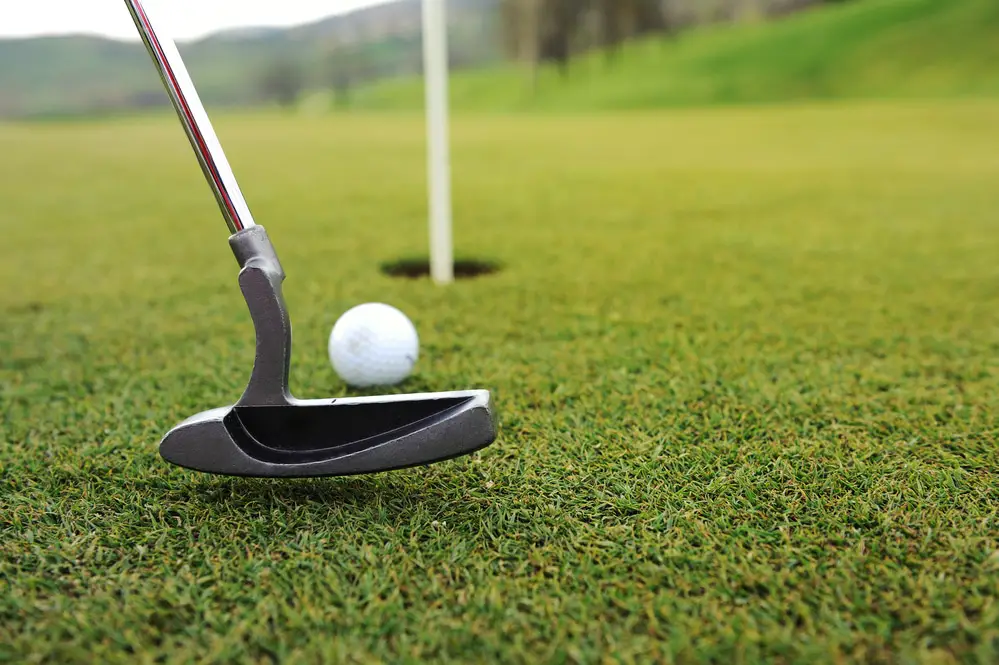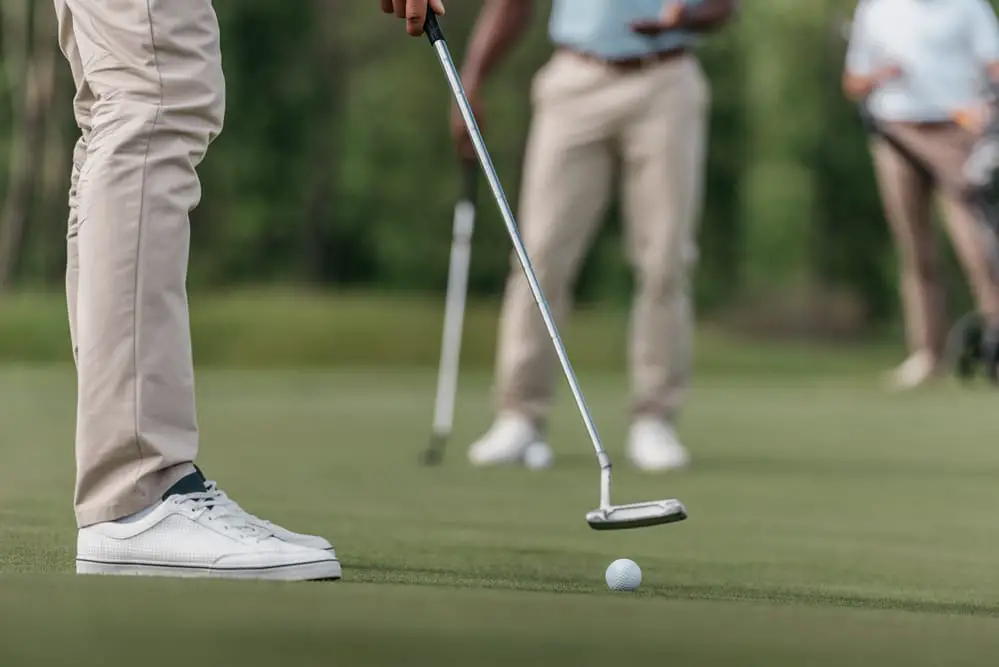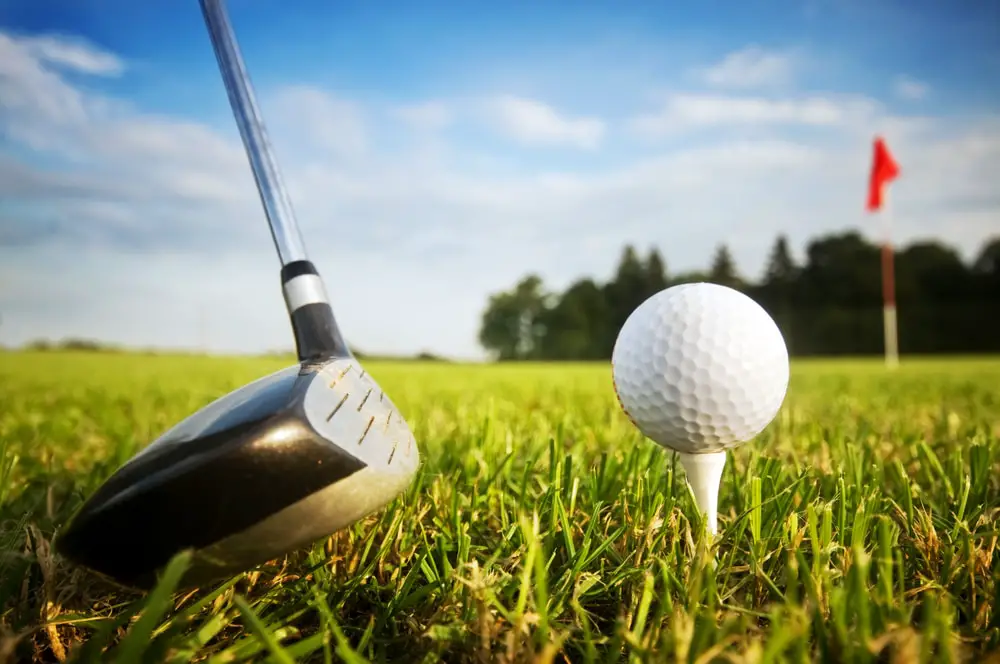Last Updated on May 28, 2023
When it comes to golf, there is nothing more satisfying than the sound of a perfectly hit ball. But how do you ensure that your swing will send the ball soaring? Whether you’re a beginner or an experienced golfer, understanding and executing each step in the process of hitting a golf ball correctly can make all the difference. Let’s take a closer look at what goes into making sure your backswing, downswing, and follow through are on point.
Table of Contents:
Backswing
The backswing is the most important part of a golf swing. It sets up the entire shot and can make or break your game. To execute a successful backswing, you must start with a proper setup. This includes having your feet shoulder-width apart, knees slightly bent, arms relaxed and extended away from your body, and weight evenly distributed between both feet.
Next comes the takeaway. Start by turning your shoulders to initiate the club’s movement away from the ball while keeping your arms straight and maintaining balance throughout this motion. As you continue to turn your shoulders, allow for a slight hinge in your wrists as you bring them up towards chest level while still keeping them connected to each other throughout this motion.

At chest level, initiate the rotation around an imaginary axis created by extending one arm outwards while rotating it clockwise (for right-handed players). Maintaining good posture and keeping your head down is essential to ensure that all power generated stays within the core muscles. Avoid any excessive hip movement during this rotation phase of the backswing to prevent loss of energy outside of those core muscles.
At full extension of the arms with hips rotated 90 degrees towards the target line (for right-handed players), pause briefly before beginning the transition into the downswing phase. All momentum should be directed downwards towards the ground rather than across the plane, as doing so too soon or without proper timing and rhythm established beforehand via correct setup and takeaway motions can result in a loss of power.
Having mastered the backswing, it’s now time to focus on the downswing, which is where all of your power comes from.
Downswing
The downswing is the second part of the golf swing, and it’s where all your power comes from. It starts with a shift in weight to the left side, followed by a pivot around your right hip. As you do this, your arms should stay close to your body and move downward towards the ball. The key here is to keep everything moving together in one smooth motion; don’t let any part of your body lag behind or get ahead of another.
Your club should be coming down on an inside-out path that matches up with the angle created by your shoulders at the address. This will help ensure that you hit straight shots rather than slicing or hooking them off line. As you reach impact, make sure that both hands are still connected and that they’re working together as one unit – not separately, like two separate entities trying to hit the ball independently.

At impact, try to maintain good posture while keeping most of your weight on the left side throughout contact with the ball until after the follow-through has been completed. You can also add some extra power into each shot by using a proper wrist hinge during this phase of swing – remember not to overdo it, as too much wrist action can lead to inconsistency and loss of accuracy.
Finally, once you’ve made contact with the ball and started following through, make sure you finish strong by extending fully through the impact zone until all momentum has stopped completely. Then release the club head back towards the target line for completion of the full swing cycle – if done correctly, this will help generate maximum distance potential out of every single shot taken.
Once the downswing is complete, it’s important to follow through with your swing in order to ensure maximum power and accuracy. The next heading will discuss how to execute a proper follow-through for the best results.
Follow Through
Follow through is the last and most important part of a golf swing. It’s when you complete your swing by extending your arms and rotating your body to face the target. This helps generate power, accuracy, and consistency in your shots.
What Is Follow Through?
Follow through is the motion of completing a golf swing after striking the ball. The goal is to keep your club head moving on its original path until it reaches a maximum speed at impact with the ball. This will help create more distance off each shot as well as better accuracy and control over where it goes.
Why Is Follow Through Important?
Following through properly ensures that all of the energy generated during a golf swing is transferred into hitting the ball instead of being wasted in other directions or lost due to poor technique. Proper follow-through also helps prevent injury by reducing strain on joints like elbows, wrists, shoulders, hips, knees etc., which can occur if you don’t finish out your swings correctly. Additionally, following through correctly will help ensure that you hit consistently straight shots rather than slices or hooks, which can be caused by an improper follow-through motion or lack thereof altogether.
Conclusion
In conclusion, if you want to hit a golf ball correctly and improve your game, practice makes perfect. You need to focus on mastering the backswing, downswing and follow through techniques in order to get the best results. With enough practice and dedication, you can become an expert at hitting a golf ball correctly.


